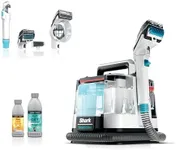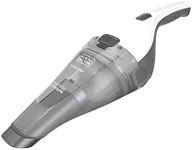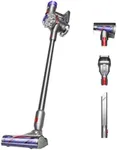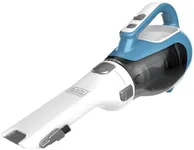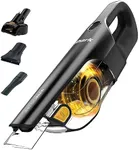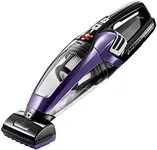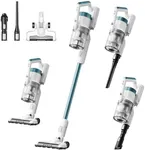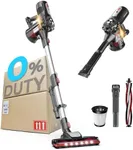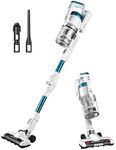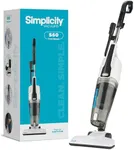Buying Guide for the Best Portable Vacuum Cleaners
Choosing the right portable vacuum cleaner can make a big difference in how effectively and efficiently you can clean your home or car. Portable vacuum cleaners are designed to be lightweight and easy to maneuver, making them ideal for quick clean-ups and reaching tight spaces. When selecting a portable vacuum cleaner, it's important to consider several key specifications to ensure you get the best fit for your needs. Here are the main specs to look at and how to navigate them.Suction PowerSuction power is a measure of how effectively the vacuum can pick up dirt and debris. This is usually measured in air watts (AW) or pascals (Pa). Higher suction power means better cleaning performance, especially on carpets and rugs. For light cleaning tasks or hard floors, a lower suction power may suffice, but for deep cleaning or pet hair, look for higher suction power.
Battery LifeBattery life indicates how long the vacuum can operate on a single charge. This is crucial for cordless models. Battery life can range from 15 minutes to over an hour. If you need the vacuum for quick, small tasks, a shorter battery life may be acceptable. However, for larger areas or more intensive cleaning, look for a model with longer battery life or a replaceable battery option.
WeightThe weight of the vacuum cleaner affects how easy it is to carry and maneuver. Lighter models are easier to handle, especially for extended periods or when cleaning stairs and high places. If you have mobility issues or need to carry the vacuum around frequently, opt for a lighter model. Heavier models might offer more power but can be cumbersome.
Dustbin CapacityDustbin capacity refers to how much dirt and debris the vacuum can hold before it needs to be emptied. Smaller capacities mean more frequent emptying, which can be inconvenient during larger cleaning tasks. For quick, small clean-ups, a smaller dustbin may be sufficient. For more extensive cleaning, look for a larger dustbin to reduce the frequency of emptying.
Filtration SystemThe filtration system is important for trapping dust, allergens, and other particles. HEPA filters are highly effective and are recommended for people with allergies or asthma. Basic filters may be sufficient for general cleaning. Consider your health needs and the type of debris you typically encounter when choosing the filtration system.
Attachments and AccessoriesAttachments and accessories can enhance the versatility of your vacuum cleaner. Common attachments include crevice tools, brush heads, and pet hair tools. Think about the specific cleaning tasks you need to perform. If you need to clean tight spaces, upholstery, or pet hair, look for a model with the appropriate attachments.
Noise LevelNoise level is measured in decibels (dB) and indicates how loud the vacuum cleaner is during operation. Quieter models are more pleasant to use, especially in homes with children or pets. If noise is a concern for you, look for models that advertise lower noise levels. For those who don't mind a bit of noise, this spec may be less critical.
Ease of MaintenanceEase of maintenance includes how simple it is to empty the dustbin, clean the filters, and maintain the vacuum overall. Models with washable filters and easy-to-empty dustbins can save time and effort. Consider how much time you're willing to spend on maintenance when choosing a vacuum cleaner.

